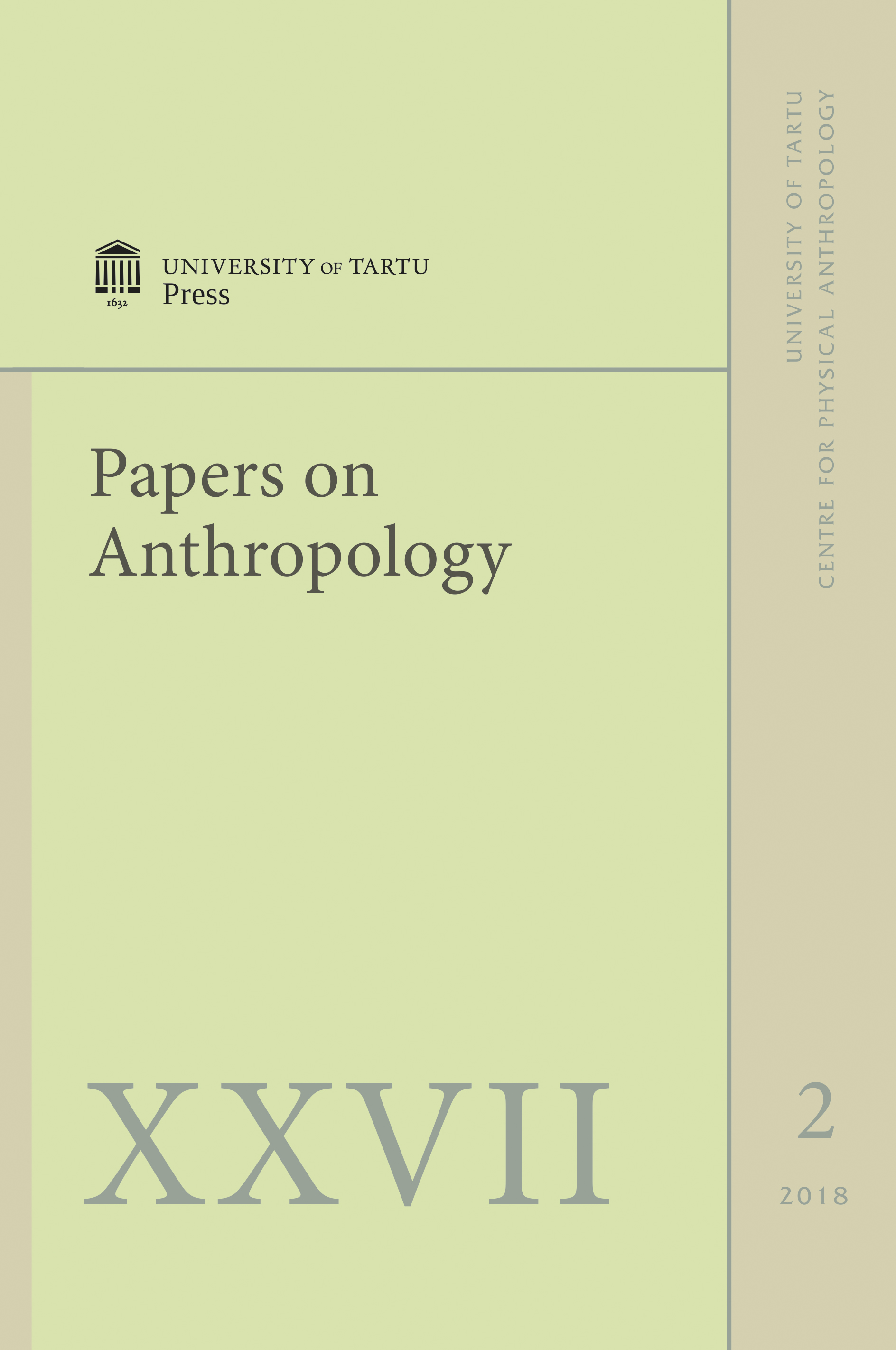Demographic data and figures derived from Estonian Iron Age graves
DOI:
https://doi.org/10.12697/poa.2018.27.2.02Keywords:
grave, inhumation, cremation, burials, demography, population size, Iron AgeAbstract
Three Iron Age cremation graves from south-eastern Estonia and four graves including cremations as well inhumations from western Estonia were analysed by osteological and palaeodemographic methods in order to estimate the age and sex composition of burial sites, and to propose some possible demographic figures and models for living communities.
The crude birth/death rate estimated on the basis of juvenility indices varied between 55.1‰ and 60.0‰ (58.5‰ on average) at Rõsna village in south-eastern Estonia in the Middle Iron Age. The birth/death rates based on juvenility indices for south eastern graves varied to a greater degree. The estimated crude birth/death rate was somewhat lower (38.9‰) at Maidla in the Late Iron Age and extremely high (92.1‰) at Maidla in the Middle Iron Age, which indicates an unsustainable community. High crude birth/death rates are also characteristic of Poanse tarand graves from the Pre-Roman Iron Age – 92.3‰ for the 1st grave and 69.6‰for the 2nd grave. Expectedly, newborn life expectancies are extremely low in both communities – 10.8 years at Poanse I and 14.4 years at Poanse II. Most likely, both Maidla I and Poanse I were unsustainable communities.
According to the main model where the given period of grave usage is 150 years, the burial grounds were most likely exploited by communities of 3–14 people. In most cases, this corresponds to one family or household. In comparison with other graves, Maidla II stone grave in western Estonia and Rõsna-Saare I barrow cemetery in south-eastern Estonia could have been used by a somewhat larger community, which may mean an extended family, a larger household or usage by two nuclear families.

